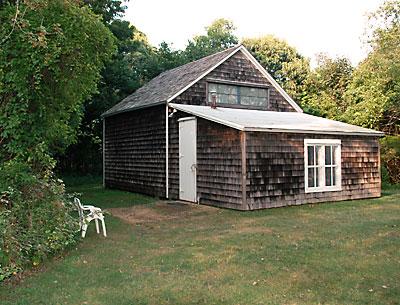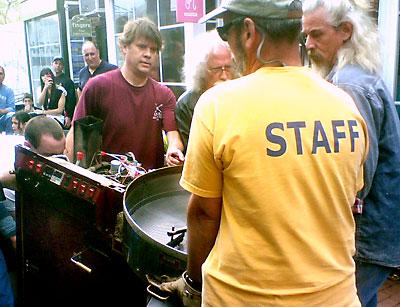Maidstone Pond Raises Some Alarms
Maidstone Pond Raises Some Alarms
“This is only the second meeting in what I anticipate will be a somewhat lengthy process,” Andrew Goldstein, chairman of the East Hampton Village Zoning Board of Appeals, said when Friday’s meeting turned to a new irrigation system planned for the Maidstone Club’s 27-hole golf course.
As the topic was brought forward, the board announced that it intended to hire its own consultant to study the plans and possible consequences. This did not assuage the dozen or so residents — golfers and environmentalists — who filed up to the podium to express concern. Some were alarmed about noise from a pump station that would be constructed, others about a proposed manmade pond, while still others worried about the irrigation system’s effects on Hook Pond, its denizens, and the long-term water supply.
Speaking on behalf of the club, David Eagan, an attorney, told the audience that the applicant was “not doing anything to the wetlands. The whole purpose of this project is to act as a supplement to Mother Nature,” only operating when rain was scarce.
James Sykes, who has lived near Hook Pond on Middle Lane for over 40 years, questioned the location of the new pond, which would be in a field that his property overlooks.
“Maidstone has always been an exceptionally good neighbor,” he said. He mentioned the noise that would be made by compressors to be installed near the pond. A similar setup at the Atlantic Golf Club in Bridgehampton, which Mr. Sykes had visited, creates, he said, “a tremendous amount of noise in an insulated and sheetrocked structure.”
He was also concerned about the impact on trees and wildlife and the possible increase in mosquito activity, as a result of the pond.
Stephen Angel, a lawyer hired by Michael Schulhof of Egypt Lane, also discussed noise, pointing to a report on three irrigation pumps to be installed, which, he noted, was to have a proposed output of 96 decibels, equivalent, apparently, to the maximum noise level of New York City subway cars. “That’s a very dramatic noise in an area where there hasn’t been this sort of noise for centuries,” he said.
Linda James, who has lived in a house on Hook Pond for 45 years, wanted the potential long-term impact “on the environmental resources so vital to East Hampton” considered, while Karen Earle and Polly Bruckmann objected to the plan in a different light.
“Maidstone is a 100-year-old golf course, one of the top 100 courses in America,” Ms. Earle said. “For 100 years we’ve gone without this irrigation. Why do we need this now?”
“I think if we took a vote of Maidstone members,” she continued, “you might find that this doesn’t make the cut.”
Ms. Bruckmann, who has “played the Maidstone course for 40 years,” also saw little need for a new irrigation system. “Why do we have to be like every other course?” she asked. “Why? Are we trying to keep up with the Joneses?” She reiterated a point made by almost every speaker: “Hook Pond is home to many resident birds and amphibians. This should not be any compromise to the wetlands,” she said.
And Telisport W. Putsavage, an attorney appearing on behalf of Bill Speck and Evelyn Lipper of Jefferys Lane, commented that a proposed well field would be “in relatively close proximity to the wetlands.”
Janet Van Sickle — who commented, “I don’t have any skin in the Hook Pond issue” — spoke about the wider effects of the system.
“They would be using the extra water at a time when it would be most absent, and needed, from all areas,” she said. “A decision now by the zoning board would have a very long-reaching impact.”
“Why is the reservoir in that location and not closer to the clubhouse?” Howard Katz asked as the audience and the board laughed. “We are not in the business of suggesting alternatives,” Mr. Goldstein answered.
“This is the start of the process,” he said. The hearing has been adjourned until June.




